#even if that would mean I’d have to make off-brand samus or an entirely new character to follow
Explore tagged Tumblr posts
Text
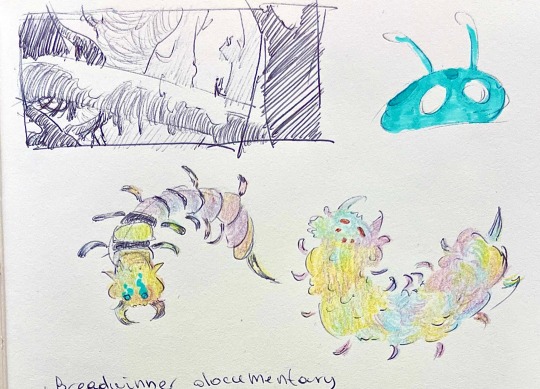
Bugs…
#doing worldbuilding for Te’rra#It would be kinda nice to have a comic or show about it one day tbh#even if that would mean I’d have to make off-brand samus or an entirely new character to follow#more likely a character. just someone else’s story unrelated to skeemus#or vaguely related like#perspective of someone whos in the same generation as skeets#and what their life is like pre and post re-opening the borders#while the change wouldn’t be instantaneous Te’rra would have to keep in contact with the rest of the universe somehow#take measures to protect themselves from other potential attacks#would be a good way to really focus on worldbuilding an environment and the visuals of that#hm. that would could make a pretty cool game too#like hunting themed or exploration themed#chill and cozy for the most part#one of those story-driven exploration games I guess#drawing#luna draws#sketch#oc#original character#art#sketchbook
13 notes
·
View notes
Text
The RPGs of the Super NES Classic #2: Super Mario RPG - Legend of the Seven Stars
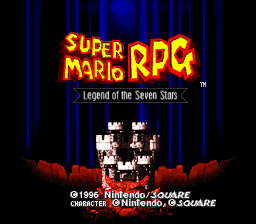
Original Release Date: March 9, 1996 (JPN)
Original Hardware: Nintendo Super Famicom
Developer/Publisher: Square/Nintendo
There was a time where the idea of Mario being in a role-playing game was absolutely bizarre. Now that Mario's had several turns at the genre it's not nearly as outlandish a concept, but just about everyone I knew who was into games at the time was quite surprised by the mere existence of Super Mario RPG. Looking at it from a Japanese perspective, it's not that strange, I suppose. RPGs were hot, parody RPGs were already a thing, and Mario wasn't any more out of place than Doraemon or Godzilla. In the West, though, things were different. Console RPGs were about to break out on the back of an incredible marketing campaign from Sony for Final Fantasy 7 and the meteoric success of Pokemon, but they weren't there yet. The ones we did get typically fell into the fantasy genre, with the odd science-fiction game to mix things up. The best-known console RPGs were heavy on melodrama and usually played things reasonably straight. So yes, the news of the Final Fantasy folks making an RPG starring Nintendo's mascot kind of came out of nowhere.
Super Mario RPG represented the culmination of what was seen as one of Nintendo's closest relationships with a third party. Square had been peddling their wares almost exclusively on Nintendo's hardware for quite some time to great success. From Nintendo's perspective, having both of the major RPG publishers in Japan on their platforms exclusively was a real boon, and Nintendo had even gone so far as to publish Final Fantasy overseas to try to get it off the ground in the West, just as they had tried to do with Dragon Quest. It was in pursuit of that Western success that Super Mario RPG was born. Square had been trying hard to get the Western console audience to bite on RPGs the way their Japanese counterparts had. They pushed the Final Fantasy brand as widely as was possible for a company of their means, made a spin-off that served as a beginner RPG, and even tried setting up an American development team. Perhaps what they needed, it was surmised, was an established star. For Nintendo's part, Shigeru Miyamoto had apparently been interested in seeing Mario star in an RPG. The deal was made and Super Mario RPG entered development early in 1995.
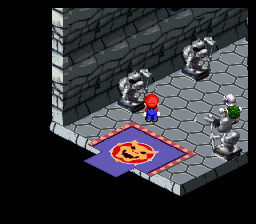
Sadly, this game would prove to be the last collaboration between Nintendo and Square for quite some time. Scant months before the official release of Super Mario RPG, Square made the announcement that changed the entire video game landscape in Japan and arguably the world. Final Fantasy 7 would be their most ambitious project yet, and it was coming exclusively to Sony's new PlayStation platform rather than Nintendo's Nintendo 64. To say Nintendo's president, Hiroshi Yamauchi, did not take this announcement well would be an understatement of the highest order. It would be several years before Nintendo and Square would mend fences and do business together again. What should have been a celebration of a great on-going business relationship ended up being its eulogy instead.
While Super Mario RPG wasn't exactly the game to break down the JRPG walls in the West, it did do fairly well for itself considering how late it released in the Super NES's life cycle. It turned out that with some careful considerations, Mario was a really great fit for a light-hearted RPG that would appeal more widely than the usual game in the genre. Of course, with the relationship soured with Square, Nintendo went in a very different direction for their next RPG starring Mario. Intelligent Systems drew some ideas from Super Mario RPG for their Paper Mario RPG on the Nintendo 64, but it was very much its own thing on the whole. Meanwhile, several former Square employees, many of whom had worked on Super Mario RPG, set up their own new studio called AlphaDream in 2000. Headed by Square's former president Tetsuo Mizuno, the team self-published just one game before beginning a long-term second-party relationship with Nintendo, the greatest fruits of which being the Mario & Luigi series of RPGs.
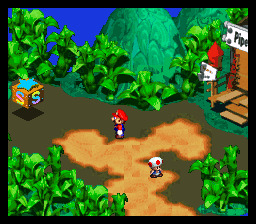
For a lot of English gamers, Super Mario RPG was their first experience with Japanese RPGs or even RPGs in general. I've noticed there is a lot of affection for the game and its characters, with many of its fans believing that the Mario RPGs never got better than this. I can appreciate that perspective, but I'm not sure that I'd agree with it. The game was attempting a very unusual hybrid of mechanics and themes, and it doesn't always work out for the best. As we would similarly see in the later Kingdom Hearts series, there's a little bit too much Square in here at times. By that I mean the game occasionally feels decidedly unlike Mario, sliding into odd bouts of melodrama and opting for a slightly darker tone than we would see in later Mario RPGs. The pacing is a little hit-or-miss, too. That all being said, I have tremendous respect for this game simply for being largely successful at navigating the tumultuous waters of mixing a beloved side-scrolling action mascot and his world with turn-based battles and leveling up.
Outside of battles, the game didn't do anything particularly unusual by action-RPG standards. The game takes on an isometric perspective and involves a fair bit of platforming and navigational puzzles. These are all things we've seen before, even among the limited selection of games I've covered on this very site. The angled view of the action can make things somewhat tricky as usual, but Super Mario RPG is wise enough not to ask too much of the player in this regard. Anything truly maddening is relegated to optional content, ensuring that even a moderately-skilled player will be able to see the story through. Battles take place in a separate screen, and basically follow the turn-based rules of games like Dragon Quest or earlier Final Fantasy titles. The big innovation here was in including timing-based commands that, if successfully performed, could increase the amount of damage you deal to enemies or reduce the damage you take.
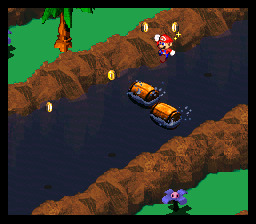
It was a smart way to bring a little bit of familiarity to a situation foreign to action game fans. Sure, you had to pick what Mario was going to do from a menu, but when he leaps into the air to jump on an enemy's head, carefully-timed button presses will allow him to bounce off of his foe's head and keep on going, just like in the platform games. This semi-action based combat would become the hallmark of Mario RPGs, with increasingly complicated mini-games introduced as time went on. Aside from pulling some of the action elements from the platformers into the game, these commands also kept the players fingers busy during battles. For players turned off by how hands-off many RPGs tended to be, this was a welcome element.
There's something else I have to give Super Mario RPG credit for, too. Namely, this is the game that started to flesh out Mario's world and the characters who inhabit it. This game was Princess Peach's second playable appearance in a non-sports game, and the first playable appearance of Mario's frequent foil, Bowser Koopa. The villainous king of the Koopas had never been presented as anything other than a nefarious bad guy before this game. Here, we saw a somewhat-likable oaf who was more egotistical than evil. This would eventually lead to Koopa starring in his own RPG in the third Mario & Luigi game, and certainly did a lot to endear the character to players. Mario's party is rounded out by new characters Mallow and Geno, who seem to have gone over a lot better with players in general than they did with me.
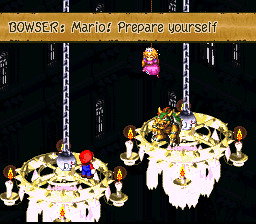
Beyond the playable cast, we also got a lot of world-building that allowed us to see the Mushroom Kingdom and other locales in ways we hadn't before. A village of Toads, the resident staff of Peach's castle, and even seeing Koopa interact with his henchmen all helped contextualize the platformers we had been playing for years. The game also features numerous nods to other Nintendo properties, to an extent that no other Nintendo title had done before. Do Samus and Link exist in the same universe as Mario? Smash eventually tells us that they sort of do, somehow, but it's first suggested in Super Mario RPG. Sure, it's just a bit of silly fun, but it was neat if you were a fan of Nintendo's wider world of releases.
My own experience with this game is somewhat strange. I bought the game the day it released for just over $100 Canadian, a typical price for Super NES games at the time. I blasted through the game over a three-day weekend, and having little desire to replay it, sold it on to a friend for $95. I was already a big fan of Japanese RPGs by this point, and I found Super Mario RPG to be a little too lightweight for my liking. To be fair, it was following a stretch of RPG releases that included Final Fantasy 6 and Chrono Trigger. There was only so much it could do. To be honest, very little of the game stuck with me at all. I first replayed it a few years ago when it got released on the Wii Virtual Console. It's a little clunky, and the art really hasn't aged well at all, but the core gameplay is solid enough. It's simultaneously more in some ways and less in others compared to the later Mario & Luigi games.
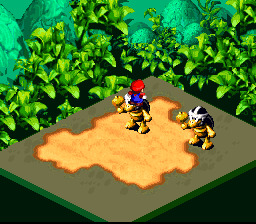
The game doesn't quite have its tone properly set, for one thing. It feels torn between trying to reconcile the silly nature of Mario's universe with an actual RPG-length plot. Later games in the series would pull back somewhat on trying to develop characters, instead opting for a greater emphasis on events and comedy to stretch things out. That gives Super Mario RPG a feel quite unlike other Mario RPGs, if nothing else. It also feels less confident in venturing too far outside of RPG norms in some ways. The various party members feel in a mechanical sense like the usual templates, something future games would expend a lot of effort to break away from. Still, there's some comfort in Super Mario RPG's embrace of the familiar. I'm not sure if this makes much sense, but if I'm in the mood for an RPG, this game does the job better than the later Mario RPGs in spite of their generally higher quality.
Given its slightly complicated rights issues (the game contains some Final Fantasy music among other bits), I'm glad that Nintendo has made it somewhat readily available through multiple Virtual Console releases and its inclusion in the Super NES Classic. While I don't think of it as highly as some others, it is one of the better Super NES RPGs to get an English translation. It's still a lot of fun, and trying to play the original game on today's TVs can be tough due to latency issues interfering with the timing of battle commands. I suspect that so long as things remain friendly between Square and Nintendo, Super Mario RPG should continue to see releases wherever Nintendo opts to plumb their back library. I only wish it had seen a Virtual Console release on the New Nintendo 3DS so that we could have the whole Mario (& Luigi) RPG series playable on a single console.
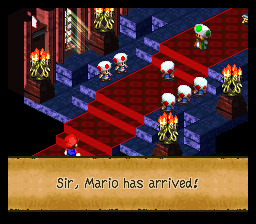
Previous: Final Fantasy 3
Next: Secret of Mana
If you enjoyed reading this article and can’t wait to get more, consider subscribing to the Post Game Content Patreon. Just $1/month gets you early access to articles like this one, exclusive extra posts, and my undying thanks.
#retro#gaming#super nes classic edition#rpg#jrpg#super mario rpg#mario#nintendo#square#super nes#snes
1 note
·
View note